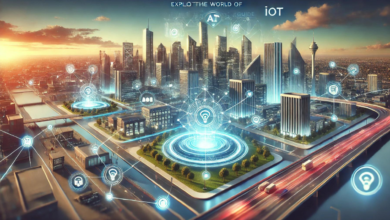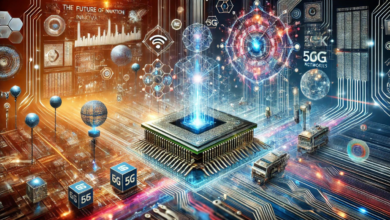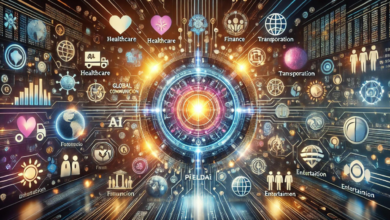The world of video presentations has come a long way since the early days of PowerPoint. What began as a simple tool for creating slideshows has evolved into a sophisticated technology that leverages artificial intelligence (AI) to deliver dynamic, engaging, and personalized content. This evolution has transformed how businesses, educators, and content creators communicate their messages, making presentations more impactful and effective. In this article, we’ll explore the journey from PowerPoint to AI and how modern video presentation makers are revolutionizing the way we create and deliver presentations.
The Rise of PowerPoint: A Revolutionary Tool for Its Time
When Microsoft PowerPoint was first introduced in the late 1980s, it quickly became a game-changer in the world of presentations. For the first time, users could easily create visually appealing slideshows with text, images, and simple animations. PowerPoint empowered individuals and organizations to communicate ideas more effectively, replacing traditional overhead projectors and printed handouts.
For years, PowerPoint dominated the presentation landscape, becoming the go-to tool for everything from business meetings to educational lectures. However, as technology advanced and audience expectations grew, the limitations of PowerPoint became apparent. Static slides and basic animations were no longer enough to capture and maintain the attention of increasingly sophisticated audiences.
The Shift Towards Multimedia and Interactivity
As the digital age progressed, so did the demand for more engaging presentations. The early 2000s saw a shift towards multimedia-rich content, with presenters incorporating videos, audio clips, and interactive elements into their slides. This shift was driven by the recognition that audiences were more likely to retain information when it was presented in a dynamic and interactive format.
During this period, various presentation tools emerged, offering features that went beyond the basic capabilities of PowerPoint. These tools allowed users to create more visually appealing and interactive presentations, but they still required a significant amount of manual effort and design expertise.
The Advent of AI: A New Era in Presentation Technology
The introduction of AI into video presentation technology marked a significant turning point. AI brought automation, personalization, and data-driven insights to the forefront, revolutionizing how presentations are created and delivered. With the advent of AI marketing and machine learning, presentations could now be tailored to specific audiences, optimized for different platforms, and enhanced with real-time data.
Modern video presentation maker equipped with AI capabilities allow users to create professional-quality presentations in minutes. AI can automatically generate scripts, suggest visual elements, and even create entire presentations based on a few input parameters. This level of automation not only saves time but also ensures consistency and quality across all presentations.
Personalization and Engagement: The Power of AI
One of the most significant advantages of AI-driven video presentation technology is its ability to personalize content. AI can analyze audience data, such as demographics and behavior, to tailor presentations to the preferences and needs of specific viewers. This level of personalization enhances engagement, making it more likely that the audience will connect with the content and take the desired action.
For example, a video presentation maker can adjust the tone, style, and content of a presentation based on the viewer’s industry or job role. It can also incorporate interactive elements that allow the audience to engage with the content in real-time, such as polls, quizzes, and Q&A sessions. These features make presentations more engaging and memorable, leading to better outcomes for businesses and educators alike.
AI-Driven Insights: Optimizing Presentations for Success
Another key benefit of AI in video presentations is the ability to gain insights from audience interactions. AI can track how viewers engage with the presentation, such as which slides they spend the most time on, where they drop off, and how they interact with interactive elements. These insights can inform future presentations, helping creators refine their messaging and improve audience engagement.
Moreover, AI can integrate with AI for marketing tools to analyze the effectiveness of presentations in achieving specific goals, such as lead generation or brand awareness. This data-driven approach allows businesses to optimize their presentations for success, ensuring that they are not only engaging but also effective in driving results.
The Future of Video Presentation Technology
As AI continues to evolve, we can expect even more innovative applications in the world of video presentations. Future developments may include more advanced natural language processing (NLP) capabilities, enabling AI to create more nuanced and contextually relevant content. Additionally, we may see greater integration of augmented reality (AR) and virtual reality (VR) into presentations, creating immersive experiences that go beyond the traditional slide-based format.
In the meantime, the current generation of video presentation makers offers a powerful blend of automation, personalization, and data-driven insights, making it easier than ever to create compelling presentations that resonate with audiences.
The Role of Video AI Apps in Modern Presentations
As AI continues to evolve, specialized video AI apps have emerged, offering even more advanced capabilities for video presentations. These apps leverage AI to streamline the entire creation process, from generating content to editing and finalizing presentations. By using a video AI app, creators can quickly produce high-quality presentations that are tailored to their audience’s preferences, all while benefiting from real-time data insights and recommendations.
Conclusion
The evolution of video presentation technology from PowerPoint to AI has been nothing short of transformative. What began as a simple tool for creating slideshows has evolved into a sophisticated platform that leverages AI to deliver personalized, engaging, and data-driven content. By embracing the capabilities of modern video presentation makers and integrating AI marketing strategies, businesses and content creators can create presentations that not only capture attention but also drive meaningful results. As we look to the future, the continued advancements in AI promise to further revolutionize the way we create and deliver presentations, making them an even more powerful tool for communication and engagement.




